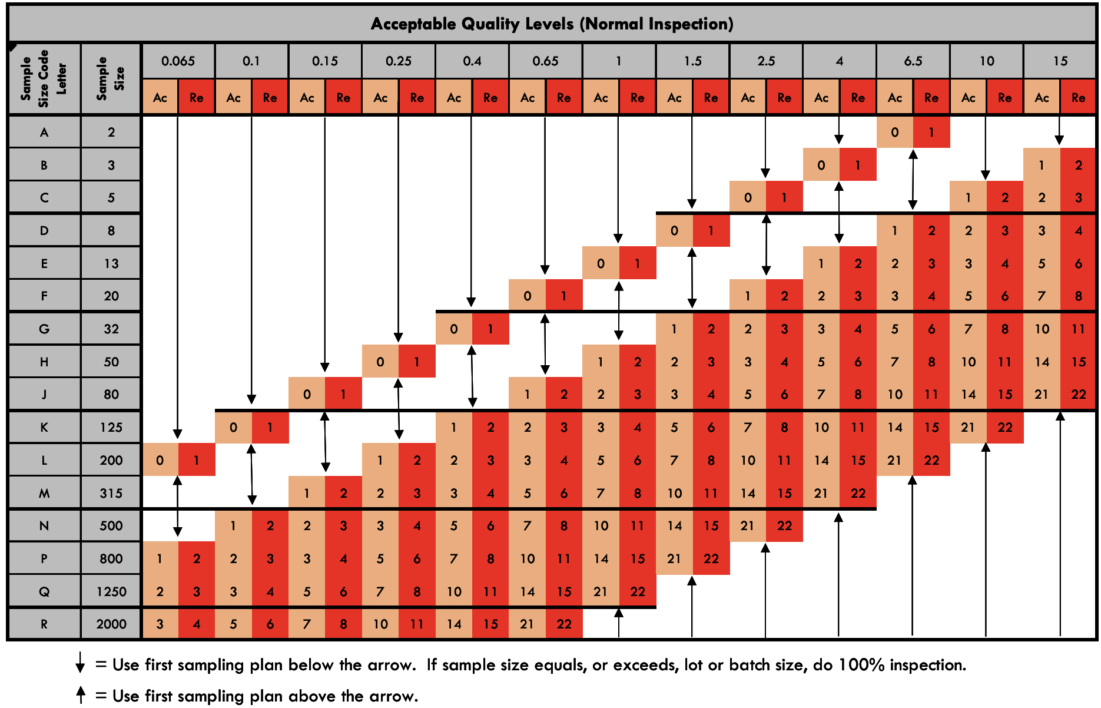Introduction
Welcome to our comprehensive guide on Acceptable Quality Limit (AQL), the cornerstone of effective quality control processes. In this article, we will delve into the details of AQL, its significance, and how it can help businesses ensure superior product quality. As a leading authority in the field, we are committed to providing you with the most valuable insights to help you optimize your quality control efforts.
Understanding Acceptance Quality Limit (AQL)
At its core, Acceptable Quality Limit (AQL) is a statistical measurement used to define the maximum number of defective products considered acceptable in a given sample size. By establishing a predetermined AQL level, businesses can make informed decisions about accepting or rejecting batches of products based on their quality performance. AQL provides a standardized framework to assess the quality of products and ensures consistency across different manufacturing processes and industries.
Importance of AQL in Quality Control
Ensuring Customer Satisfaction
Maintaining high-quality standards is paramount for businesses that prioritize customer satisfaction. AQL plays a crucial role in this regard by establishing quality thresholds that must be met before products reach the end consumers. By adhering to AQL guidelines, businesses can minimize the risk of defective products reaching customers, thereby enhancing their overall experience and satisfaction.
Cost Reduction through Efficient Sampling
Implementing AQL-based quality control practices enables businesses to optimize their sampling processes effectively. By defining appropriate sample sizes based on the AQL levels, companies can strike a balance between rigorous quality checks and cost-efficiency. This allows organizations to identify and rectify quality issues at an early stage, reducing the potential for expensive recalls, returns, or customer complaints.
Enhancing Brand Reputation
Superior product quality is closely tied to a brand’s reputation and credibility. By utilizing AQL to maintain consistent quality standards, businesses can build a reputation for reliability, instill trust among customers, and differentiate themselves from competitors. A strong brand reputation leads to customer loyalty, positive word-of-mouth, and increased market share.
Implementing AQL in Your Quality Control Process
To successfully integrate AQL into your quality control process, we recommend following these steps:
Step 1: Define AQL Levels
Begin by determining the AQL levels that align with your product’s quality requirements and industry standards. Factors such as product type, customer expectations, and regulatory guidelines should be considered while setting the appropriate AQL levels.
Step 2: Establish Sampling Plans
Once the AQL levels are defined, develop comprehensive sampling plans that outline the sample size and inspection criteria. These plans should account for various stages of the manufacturing process, including raw materials, in-process production, and finished goods.
Step 3: Conduct Inspections
Execute regular inspections based on the established sampling plans. Inspections should be performed by trained quality control personnel who possess a deep understanding of the product specifications and the AQL guidelines.
Step 4: Analyze Inspection Results
Thoroughly analyze the inspection results to determine the quality status of the inspected batches. By comparing the number of defects found in the sample with the specified AQL levels, businesses can make informed decisions about accepting or rejecting the entire batch.
Step 5: Continuous Improvement
Quality control is an iterative process. Regularly evaluate the effectiveness of your AQL-based quality control system and identify areas for improvement. Incorporate feedback from inspections and implement corrective measures to further enhance product quality.
AQL Table


How to Read the AQL Chart
It is a fairly simple procedure. The following are the terms of the AQL table:
- Lot or batch size: This refers to the total number of pieces that the inspector will check or inspect.
- Samples Code letter: This code denotes a batch size range.
- Sample size: This refers to how many pieces will be selected for inspection from the total number of pieces available (Batch).
- Ac (Accepted): The number in this column indicates that the shipment will be accepted by the buyer if the inspector finds up to that many defective parts.
- Re (Rejected): On the other hand, the number in this column indicates that if the inspector finds that many defective items or more than the indicated number, the shipment will be rejected (or sent to the manufacturer for 100% inspection and re-offered for final inspection) by the buyer.
The above AQL tables will assist you in determining the sampling size based on the quantity ordered and the severity level chosen. Levels I, II, and III are available, with Level III requiring the most thorough examination and Level I requiring the least. Level II is the most regularly used standard level in the garment sector. Though this is at the client’s discretion, it is the most suggested level.
If you are inspecting 20,000 pieces on General Inspection Level -II, AQL level 2.5, the sample code will be the letter M corresponds to a sample size of 315 units.
This means you need to inspect 315 pcs. After the inspection of all 315 pieces If you discovered 14 or fewer defective items, you must accept the shipment. In addition, if you find 15 or more defectives in 315 samples, you must reject the shipment.
Conclusion
In conclusion, AQL serves as a powerful tool for businesses aiming to achieve superior quality control. By implementing AQL in your quality control processes, you can ensure customer satisfaction, reduce costs, and enhance your brand reputation. Remember to define appropriate AQL levels, establish comprehensive sampling plans, conduct regular inspections, analyze results, and continuously improve your quality control system. By prioritizing quality through AQL, you can gain a competitive edge in the market and surpass your competitors in delivering exceptional products to your customers.
To learn more about how to optimize your quality control processes and leverage AQL effectively, reach out to our team of experts today. We are here to support you in achieving excellence in quality control and exceeding customer expectations.
Read more about AQL : https://apparelscience.com/how-to-use-aql-in-garment-industry/







